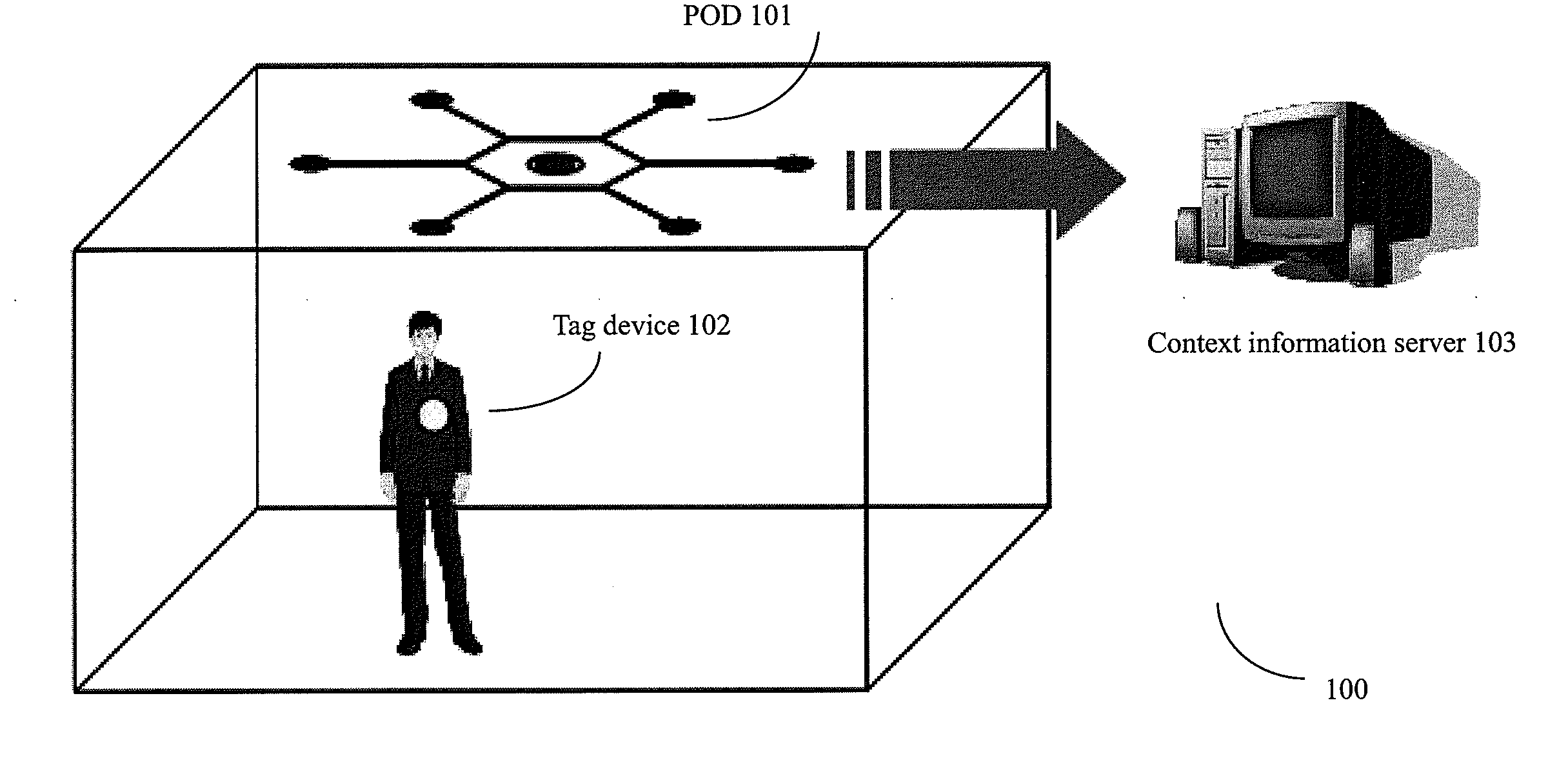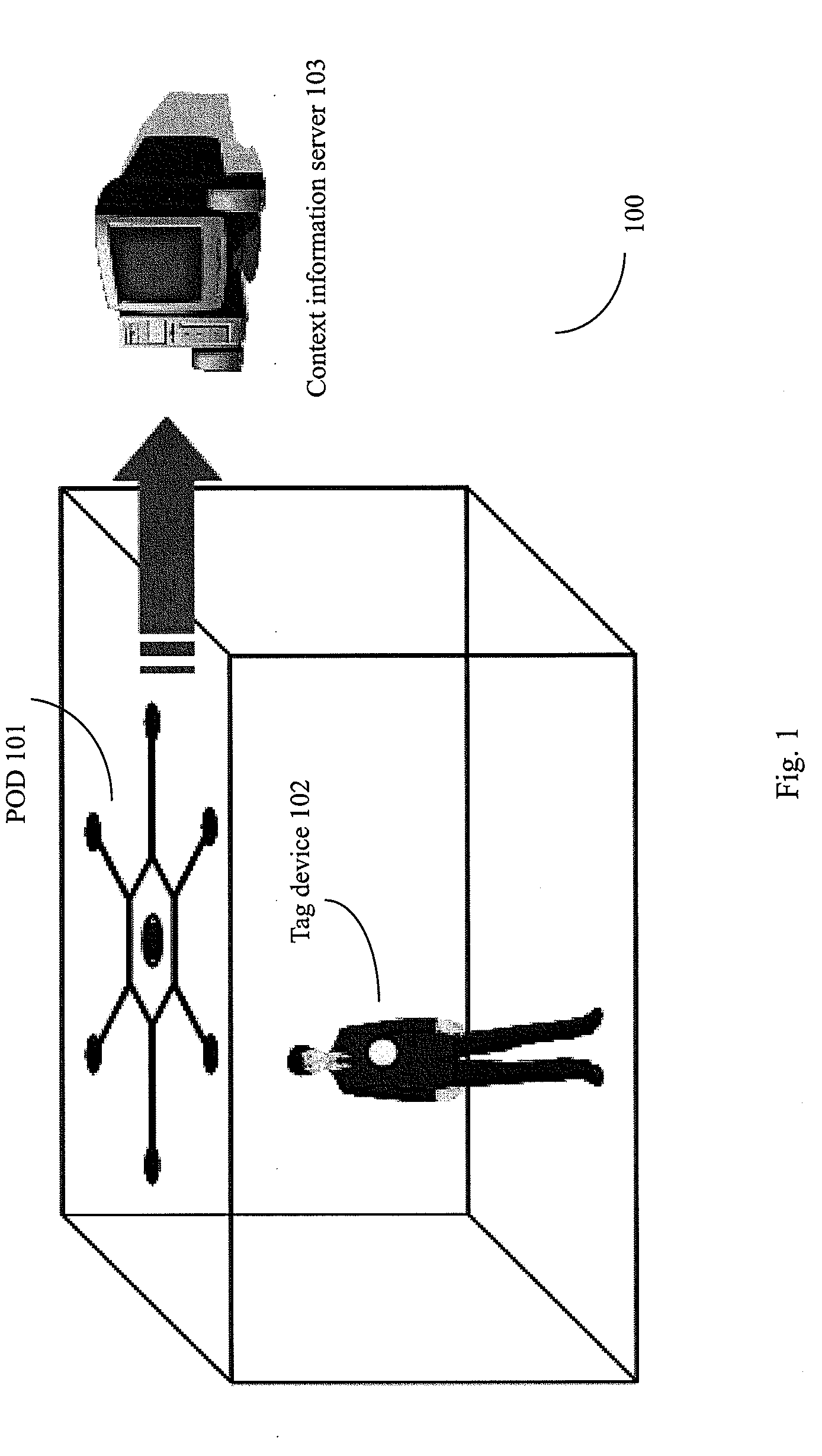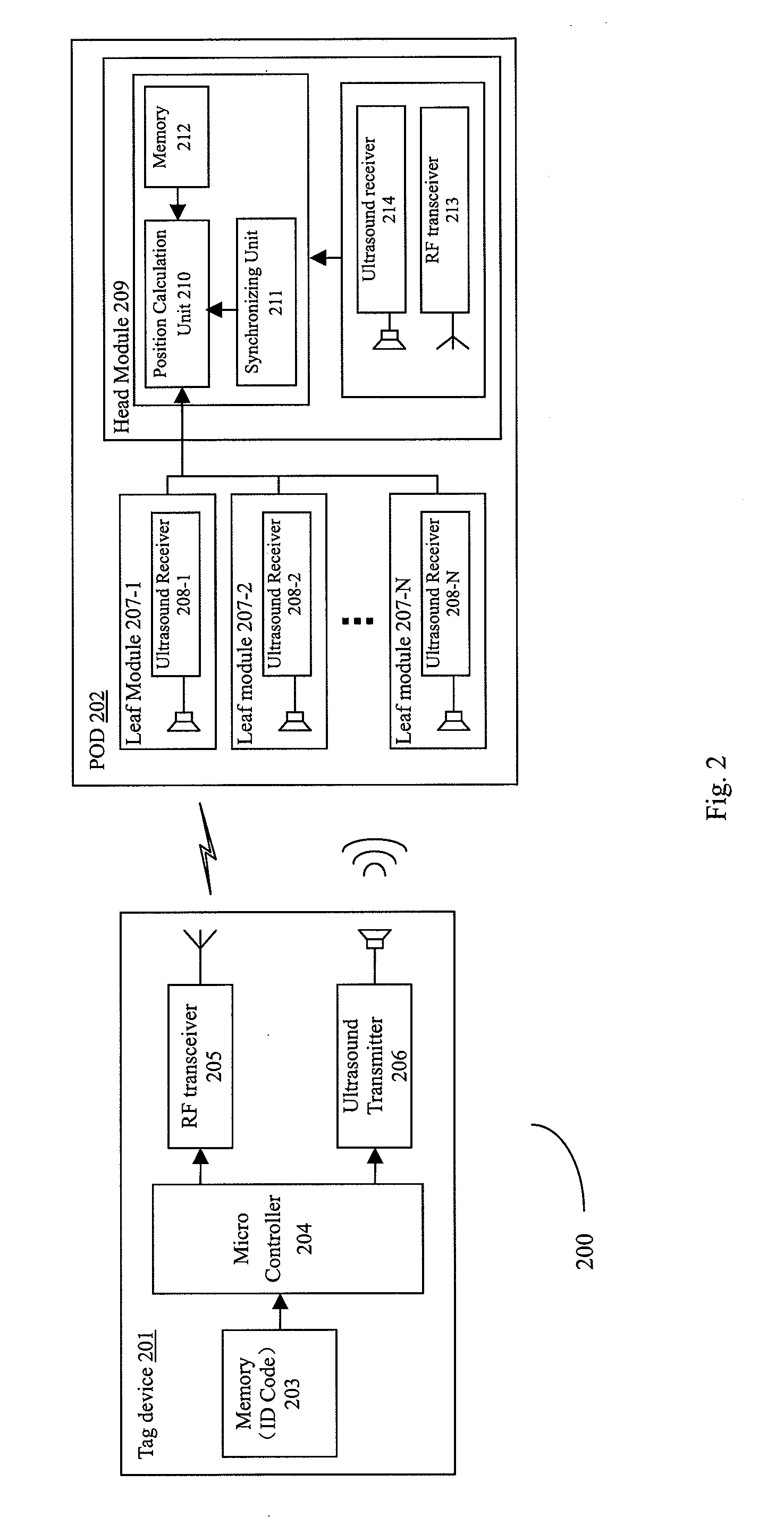Autonomous ultrasonic indoor tracking system
an indoor tracking and ultrasonic technology, applied in direction finders, instruments, acoustic wave reradiation, etc., can solve the problems of unsatisfactory system, cumbersome and inaccurate, and mainly depends on the calibration process, so as to achieve convenient installation and maintenance, improve accuracy, and facilitate deployment
- Summary
- Abstract
- Description
- Claims
- Application Information
AI Technical Summary
Benefits of technology
Problems solved by technology
Method used
Image
Examples
Embodiment Construction
[0050]FIG. 1 is a block diagram for showing the complete construction of the Autonomous Ultrasound Indoor Track System (AUITS) 100 according to the present invention. As shown, the system 100 includes a Positioning on One Device (POD) 101, a tag device 102 carried by the object to be located and a context information server 103. In the system 100, the tag device 102 can transmit both of RF signal (synchronization signal) and ultrasound pulse (positioning signal). The POD 101 installed on the ceiling can infer position of the object based on the Time of Arrivals (TOA) of the ultrasound pulses and an adaptive fusion strategy.
[0051]FIG. 2 is a block diagram for showing internal structure of an AUITS system 200 according to one embodiment of the present invention. As shown in FIG. 2, the tag device 201 can include a memory 203, which for example stores an ID code unique to each object. In the following communication, the ID code can be included in the transmitted synchronization or posi...
PUM
 Login to View More
Login to View More Abstract
Description
Claims
Application Information
 Login to View More
Login to View More - R&D
- Intellectual Property
- Life Sciences
- Materials
- Tech Scout
- Unparalleled Data Quality
- Higher Quality Content
- 60% Fewer Hallucinations
Browse by: Latest US Patents, China's latest patents, Technical Efficacy Thesaurus, Application Domain, Technology Topic, Popular Technical Reports.
© 2025 PatSnap. All rights reserved.Legal|Privacy policy|Modern Slavery Act Transparency Statement|Sitemap|About US| Contact US: help@patsnap.com



